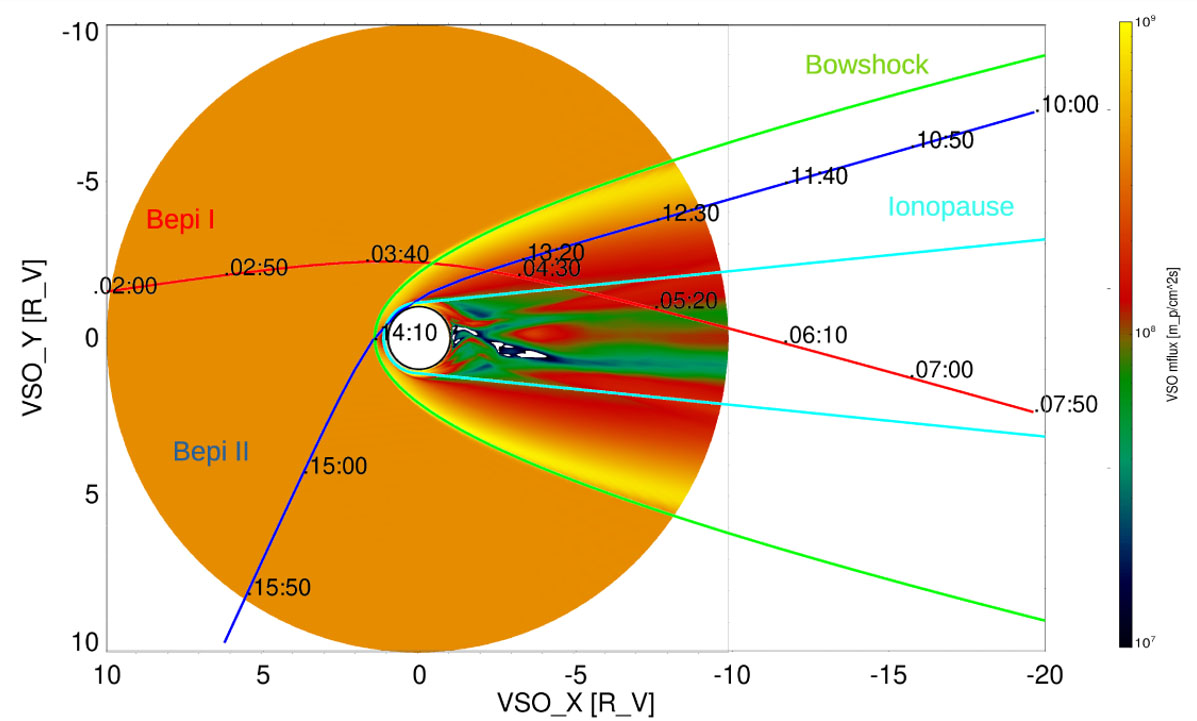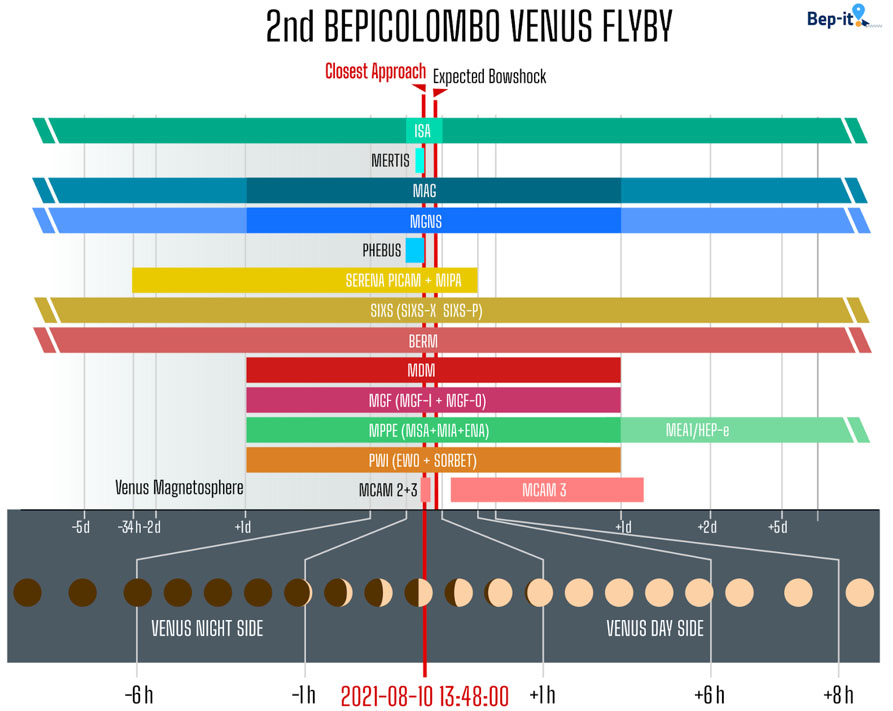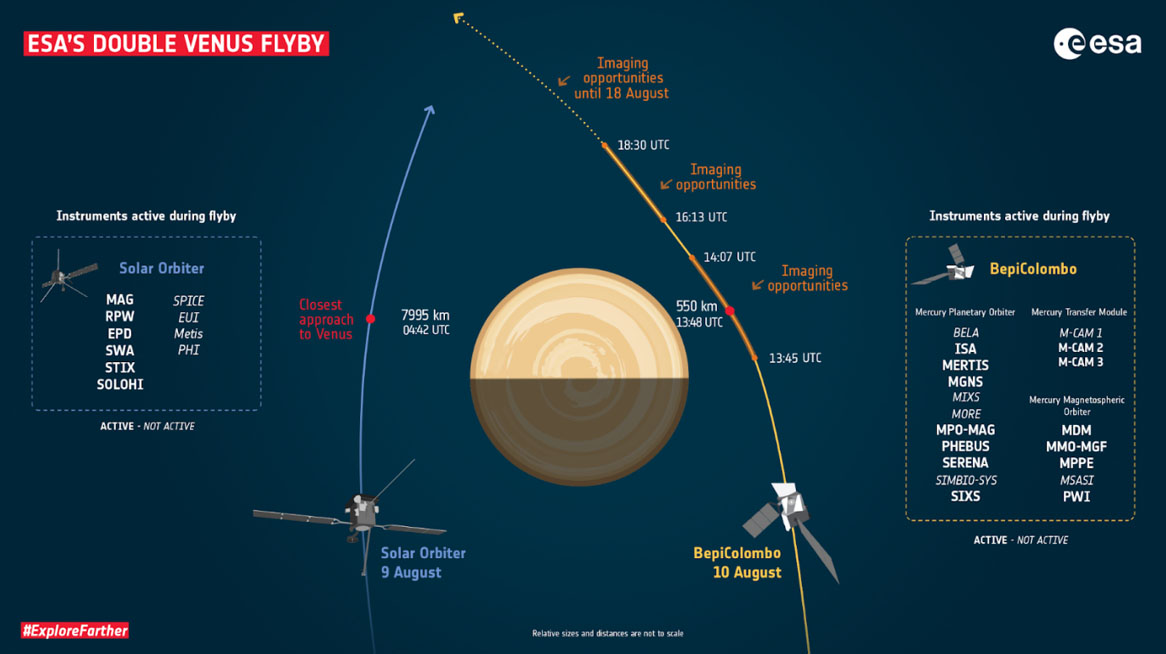BepiColombo 2nd Venus Flyby
05 August 2021
The second flyby at Venus will take place on August 10th, 2021, about 10 months after the first (October 15th 2020). The much lower altitude above the surface (552 km) will allow a wider range of investigations, with some improvements with respect to the first one (derived from different geometry and from the experience of the 1st flyby).

Venus flybys trajectories in XY plan, VSO system. Note that Y axis is increasing downwards. Units are in Venusian Radii. Credits: Markus Fraenz, MPI, Goettingen, Germany
This time Venus will be approached from the nightside (see figure above, Bepi II, blue line), though still approaching the planet from the evening terminator (i.e. on the same side of the planet as for the 1st flyby). Then, BepiColombo will be in the magnetotail already in the day(s) before closest approach, and will exit the bow shock shortly after.
Here below a timeline shows the time of operations of all the instruments onboard BepiColombo that are planned to acquire data:

Second Venus flyby timeline: upper panel shows the sequence of switching on and off of the different instruments; bottom panel, the disk of Venus as it will appear from Bepi during the flyby, while passing from the nightside to the dayside.
Credits: Valeria Mangano and Carmelo Magnafico, INAF-IAPS, Rome.
For what concerns the planetary investigations of Venus, some instruments will acquire data mainly in the 2 days around the flyby (like MERTIS, PHEBUS, SERENA, SIXS and MPPE, PWI, MGF, MDM) while others like ISA, MAG, MGNS and BERM are operating almost continuously during the cruise, but in shorter periods, around the closest approach, will turn to high resolution modes to optimize the scientific income.
SERENA, in particular, will operate both sensors PICAM and MIPA, starting from 34 hours before CA (closest approach), and up to CA+6h.
The peculiarity of this flyby lies in the occurrence of another flyby at Venus 1 day earlier by another ESA spacecraft. Solar Orbiter, in fact, will flyby Venus on August 9th at 04:42 UTC, about 33 hours earlier. It will pass by Venus at a minimum altitude of 7995 km, and on the other side of the planet (facing the morning terminator).

ESA infographic showing the two flybys of Solar Orbiter (left, blue line) and BepiColombo (right, orange line). Note that the trajectories are not scaled and not shown at the same time (they are 33 hours apart).
Credits: ESA (https://www.esa.int/Science_Exploration/Space_Science/ESA_gets_ready_for_double_Venus_flyby)
The image above shows the geometries of the two spacecraft and the different instruments that will be operated.
The almost-contemporaneous measurements of the two spacecraft will allow additional science to better understand the interactions between the solar wind and the complex environment of Venus.
More info can be found at the cosmos page of Venus flyby:
https://www.cosmos.esa.int/web/bepicolombo-flyby/venus-flybys




